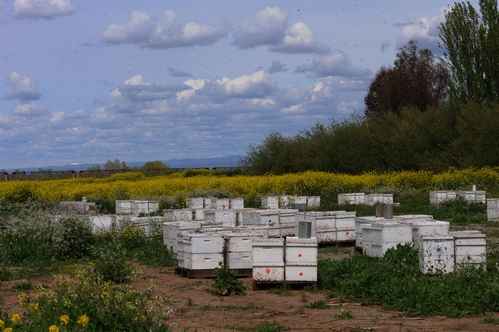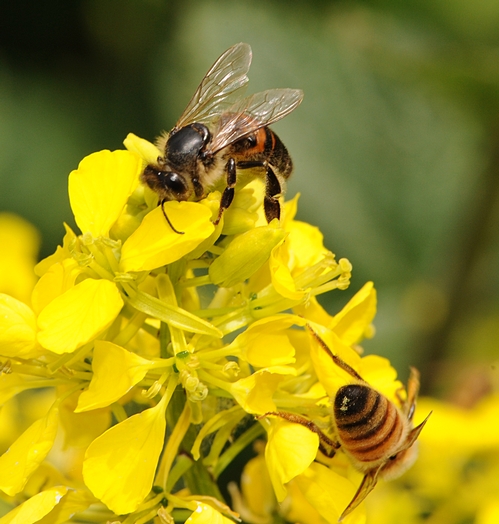Picture this.
It's a picture-perfect day on Thursday, April 1 at Olivarez Honey Bees, Inc. in Orland, Calif.
Susan Cobey's queen bee-rearing class at the University of California, Davis, is touring the bee farm with guide Ray Olivarez Jr., who is explaining his company's production procedures amid gleaming white hives and a grinning mustard field.
An elderly bee--one that survived the winter--lands on a mustard blossom near them. A spring bee, a mere teenager, buzzes in right next to her.
They nectar the blossoms as their ancestors did millions of years ago.
Cobey, a world-renowned bee breeder and geneticist and manager of the Harry H. Laidlaw Jr. Honey Bee Research Facility at UC Davis, will be heading back to the Olivarez honey bee farm on Saturday, April 17 for the company's second annual Hobbyist Day. She and Randy Oliver of Grass Valley, a noted bee researcher, writer and commercial beekeeper, will share the speakers' podium from 11 a.m. to noon.
The Hobbyist Day, open to the public, begins at 9 a.m., when beekeepers will pick up their three-pound packages of bees (Italian or New World Carniolans) and glean information at the bee research booths. The day's activities include a barbecue lunch from noon to 1 p.m.; package bee installation demonstration at 1 p.m.; and demonstrations on caging, grafting and cell building from 2 to 3 p.m.
Although this educational event is open to the public, reservations are encouraged (877-865-0298).
Backyard beekeeping is the "in" thing. As the Olivarez family points out: "With a simple colony of honey bees, you can have more and bigger blooms on your flowers; have more sweet goodness from your vegetable garden; enjoy fresh, wholesome honey; and do your part to help save the pollinator."
It's not just about humans. It's about saving the bees, our environment and wildlife. Sometimes we overlook the fact that honey bees pollinate plants that provide food and shelter to wildlife--such as bears that eat blackberries that are pollinated by bees.
And, as the Olivarez family says: "Plants reduce soil erosion and add beauty and color to our world!"
Indeed they do. A field of mustard becomes a field of dreams.
Attached Images:

Peaceful Scene

Elderly Bee

Two's Company

The End